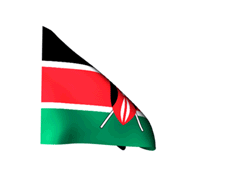WHAT DOES CURATIVE PETITION MEAN?

In the recent
times, one has heard the word curative petition several times as some of the
Accused in the Nirbhaya Case have moved such a petition in the Supreme Court of
India. A curative petition is the last resort available to a person before the
Supreme Court of India.
The concept of curative petition is comparatively of recent times. Its’ jurisprudence has emerged from a Latin Maxim “actus curiae neminem gravabit”, which means that an act of the court shall prejudice no one. It is a discretionary power given to the Supreme Court that can be exercised in rarest of the rare cases.
The presence of this remedy is being developed with time through judicial precedents pronounced by the Hon’ble Supreme Court of India, to provide complete access to justice through a fair and just procedure under the law. Accordingly, its essence was found by the Supreme Court in case of Rupa Ashok Hurra Vs Ashok Hurra and Anr. ( AIR 2002 SC 1771),where the Court reconsidered its judgment in exercise of its inherent powers and laid down certain parameters that can be considered while filing and entertaining a curative petition under Article 142 of the Constitution of India, 1950.
This petition can be filed only when the final order/judgment is being pronounced by the Hon’ble Supreme Court and review petition against that final order/judgment is also dismissed. Thereafter, any person having a strong apprehension of any error, omission or mistake that has been committed in deliverance of a decision or a gross violation of the principle of natural justice can move such a petition Under Articles 129, 137, 141 and 142 of Constitution of India read with Order XLVIII of the Supreme Court Rules 2013.
For filing the curative petition, it is essential that it states the details of the judgment and final order against which a review petition has been filed and dismissed by the court. The curative petition must raise a question of law or laws of general public importance and at no point can it raise any facts in issue. The petition must state the same grounds as stated in the review petition filed earlier and must not state any new grounds.
It is also required that, a Senior Advocate needs to certify and point out substantial grounds for the petition to be entertained and the same will be reviewed by the three Senior-Most Judges of the Court alongside the Judges who passed the judgment and if the majority feels that there was a violation, then the curative petition would be heard by the same bench. However, Court can also impose exemplary costs on the petitioner if it finds any discrepancy during the proceedings.
Essentially, these Petitions are being heard by the Judges in chamber unless, it is specifically requested to be heard in an open-court. Also, the curative petition is not governed by the provisions of the Limitation Act but it must be filed within a reasonable time being the last legal remedy available to the aggrieved person.
Therefore, the
provision of curative petition renders every aggrieved person to raise
substantial grounds towards their innocence in order to prevent injustice. It
is a constitutional right based on principles of natural justice, fair trial
and lawful administration.
Lakshmi Vishwakarma
Associate
The Indian Lawyer




































Leave a Reply